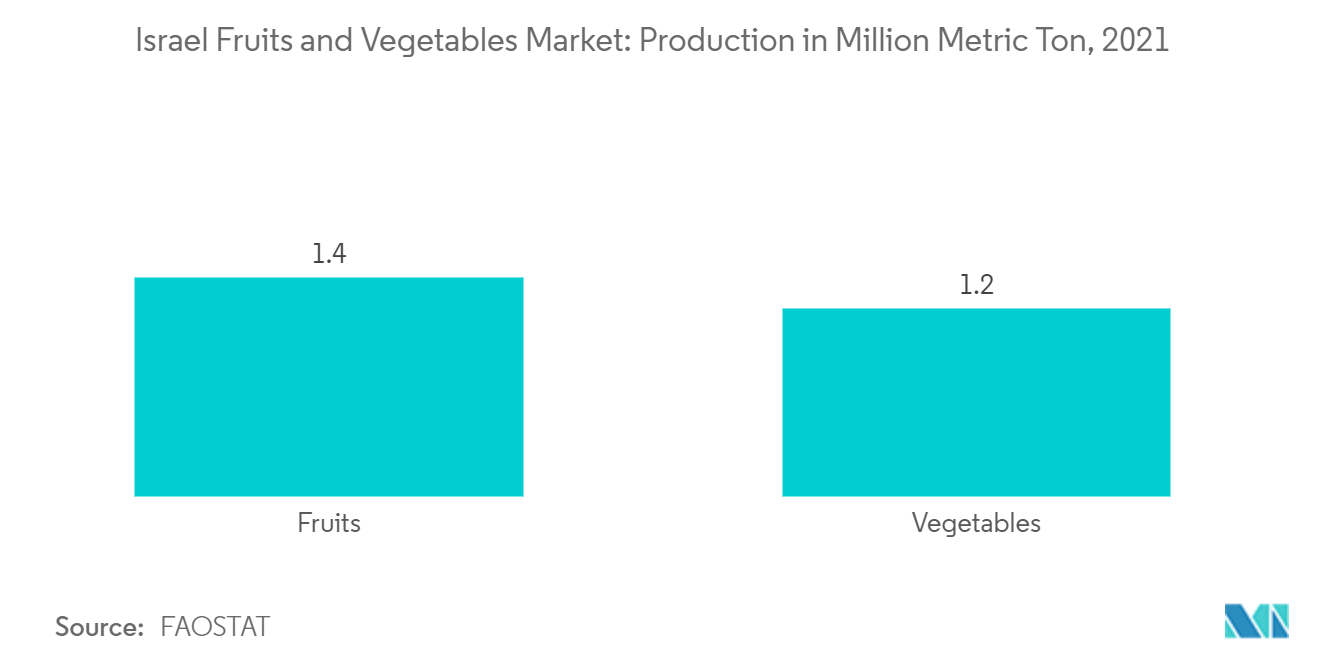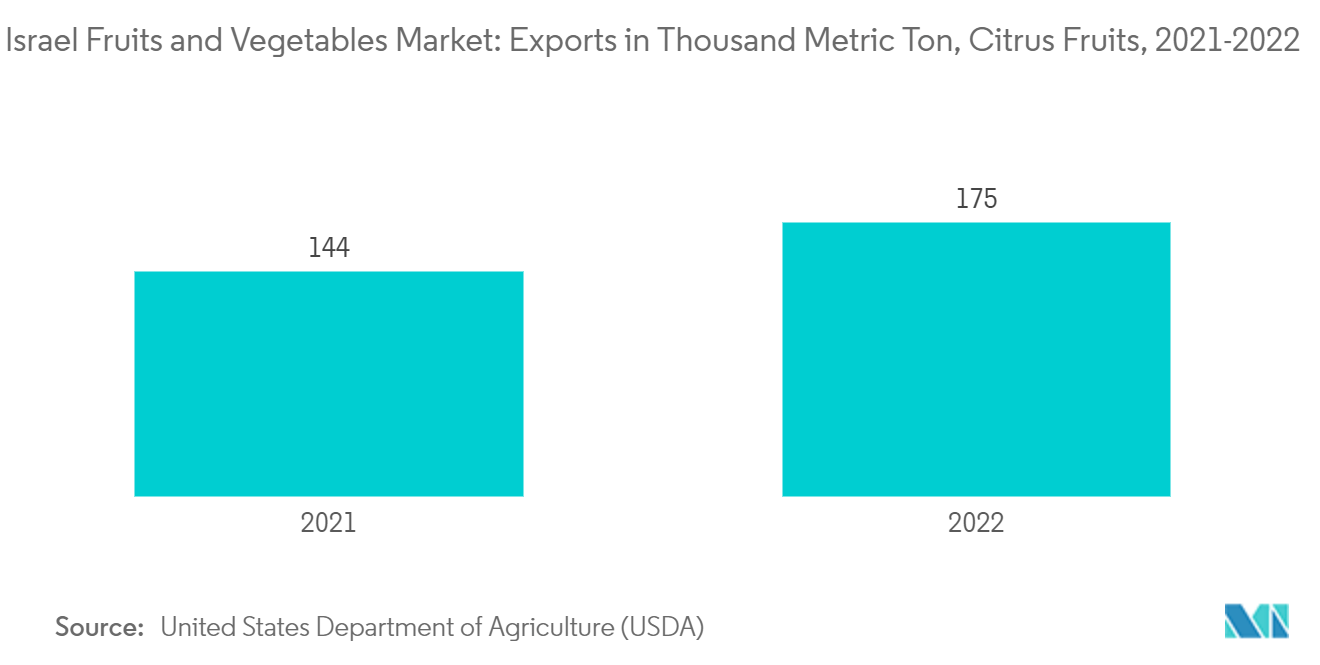Market Trends of Israel Fruits & Vegetables Industry
Fresh Fruits and Vegetables Driving the Consumption of the Market
Israeli growers market approximately 2 billion kilos of fresh fruits and vegetables to the local market every year, which are high in concentration of antioxidant nutrients in tissues especially vitamin C, carotenoids and polyphenols and a lower risk of cardiovascular diseases, each of which has high health and nutritional values. For many years, local growers have been proving their great importance as a first-rate factor in maintaining Israel's food security and providing the citizens of the country with fresh and healthy agricultural produce. This will increase the market and encourage its growth of the market in future years.
According to the US Healthy Eating Index (HEI), there are several versions of diet quality, a healthy food basket, that have evolved over the years and current recommendation is for 50% consumption of fruits and vegetables (20% and 30%, respectively), proteins - 20%, and carbohydrates (whole grains) - 30%. Israel has adopted the Mediterranean dietary plan, which includes unprocessed plant-based whole foods with a combination of smaller amounts of animal protein. According to FAO, the production of fresh produce is increasing year on year in the country in order to achieve self-sufficiency of the country without depending on others.
According to Israel Plants Production and Marketing Board, some of the imported dried fruits, oils, and agents to create a shiny appearance, artificial food colors are also added, and these may cause various symptoms among sensitive people and children. Therefore, it is recommended to consume fresh fruits and they are completely natural, full of vitamins (some of which play an important role in the functioning of the immune system), minerals and antioxidants and do not contain any additives.
Israel is not importing any of agricultural produce unnecessarily and without supervision in a way that will not reduce prices or benefit consumers. It will bring with it diseases and pests that will seriously harm farmers and in Israeli crops. For instance, exports of U.S. fresh citrus to Israel are currently not permissible because a Pest Risk Assessment (PRA) has not been conducted for U.S. citrus. If any country produce with citrus greening is not allowing in the country. In addition, Israel does not import any fresh citrus fruit and is not expected to do so in the coming years.

Increase in Regional trade of Citrus Fruits is Driving the Market
Israeli citrus production is located throughout the country with Oranges, Grapefruits and Lemons are the major grown fruits in this segment. According to United States Department of Agriculture (USDA), Total mandarin and tangerine production in 2022-23 is forecast at 170,000 metric ton, up from 159,000 metric ton in 2021. Israel grows more than 15 varieties of mandarins and tangerines, but growers focus mainly on the Or/Ori variety. Mandarins and tangerines represent 6,700 hectares, which is 42% of Israel's total area planted in citrus. The processing sector received smaller quantities of tangerines this year due to high demand and strong prices in the domestic market and encourage the market to grow in the coming years.
Grapefruit production is forecast at 190,000 metric ton in 2022-23, up from 175,000 metric ton in 2021. In Israel, 4,000 hectares are planted in grapefruit. Farmers previously were decreasing their plantings of grapefruit due to low demand, but in the last few years there have been growing markets for the product in Asia, especially for red grapefruit. Due to good weather conditions during the growing season and increasing demands, mainly for red but also for white grapefruits in both the international and domestic markets resulted in good market prices for growers.
In Israel, the bulk of orange production will go to the local market and the domestic processing industry which grows more than 15 varieties of mandarins and tangerines. The European Union remains to be the largest importer of Israeli citrus, followed by Russia and the United States. In recent years, the country is expanding its citrus exports to destinations such as South Korea, China, and Japan to consolidate its position in the global citrus industry.
According to United States Department of Agriculture (USDA), Israel's exports of citrus in 2022-23 will reach 175,000 metric ton, up 23% from the previous season. Two varieties made up 81% of citrus exports from Israel in 2021-22 is the Or mandarin variety and red grapefruit. This will anticipate growing the market of citrus in the country during the forecast period.

